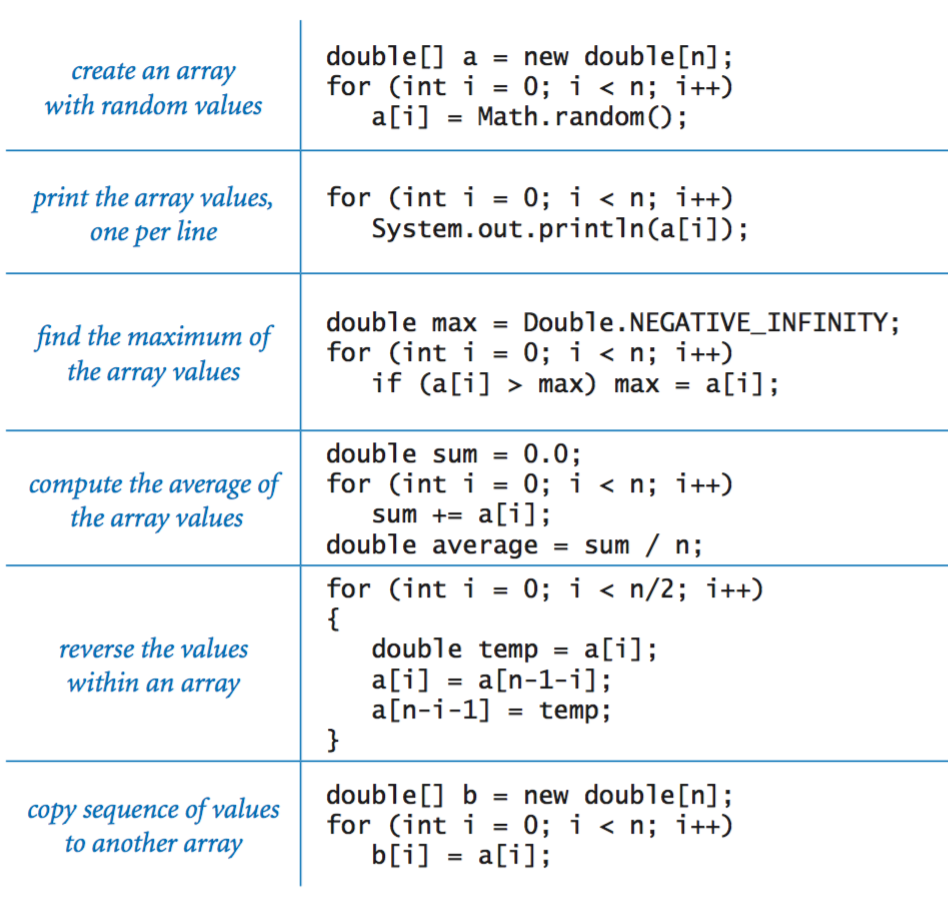Programming Blackjack In Java

Write a program that recreates a game of Blackjack (aka 21). The object of the game is to accumulate cards that add up to 21 without exceeding this total (BUST). Your game should include 2 players and a dealer. The players bet money that the total points in their hand is greater than that of the Dealer (the players should not compete against each other).
- This blog post provides step by step instructions for trying out OAuth 2.0 using WSO2 Identity Server. Here I use Identity Server 5.3.0 which is the latest released version by the time of this writing.
- Blackjack.java is the 'Main' class in this program, which uses the other files (including yours) to run a Blackjack program. This file will only work when you complete the homework and you can run the file to simulate a blackjack game. Review the class material on ArrayLists and class material and textbook on interfaces.
View Blackjack.java from CS1102 JAVA PROGR at University of the People. /. This program lets the user play Blackjack. The computer. acts as the dealer. The user has a stake of $100, and. makes a. Blackjack Blackjack is a simple java program demonstrating file I/0 and using multiple classes in java. The program deals a blackjack hand, and checks the user's decisions (hit, stand, double or split) against correct strategy. The correct strategy is laid out in the text file 'bjin.txt' which should reside in the same directory as the program.
Requirements:1. Include at least (1) EACH of the following:
• If-Else-Else If Statements
• Switch Statement
2. Loops: Include at least (2) DIFFERENT TYPES of loops from the following:
• FOR loop
• WHILE loop
• DO-WHILE loop

3. File Management: Your project should perform at least (1) of the following tasks:
• READ FROM an input file
• WRITE TO an output file
• READ FROM and WRITE TO the same file.
4. Methods
• Include at least (5) Methods throughout your Project.
• Include at least (1) Overloaded Method in your Project.
5. Classes
• Include at least (3) Classes in your Project
• Include at least (1) EACH of the following:
o Class that inherits from another class
o Abstract class
6. Arrays
• Include at least (2) Arrays or ArrayLists
7. Java Libraries
• Import at least (3) Java Libraries (e.g. java.util.Scanner)
8. Exceptions
• Be warned: I AM TRYING TO CRASH YOUR PROGRAM!
Blackjack Game Program Java
• All exceptions should be handled gracefully.
• Include at least (1) Programmer-created Exception.

In this applet, the user plays a game of Blackjack. The computer acts as the dealer. The user plays by clicking “Hit!” and “Stand!” buttons.
The programming of this applet assumes that the applet is set up to be about 466 pixels wide and about 346 pixels high. That width is just big enough to show 2 rows of 5 cards. The height is probably a little bigger than necessary, to allow for variations in the size of buttons from one platform to another.
[sourcecode language=”java”]/*******************************************************
* MYCPLUS Sample Code – https://www.mycplus.com *
* *
* This code is made available as a service to our *
* visitors and is provided strictly for the *
* purpose of illustration. *
* *
* Please direct all inquiries to saqib at mycplus.com *
*******************************************************/
import java.awt.*;
import java.awt.event.*;
import javax.swing.*;
public class BlackjackGUI extends JApplet {
public void init() {
// The init() method creates components and lays out the applet.
// A BlackjackCanvas occupies the CENTER position of the layout.
// On the bottom is a panel that holds three buttons. The
// BlackjackCanvas object listens for events from the buttons
// and does all the real work of the program.
setBackground( new Color(130,50,40) );
BlackjackCanvas board = new BlackjackCanvas();
getContentPane().add(board, BorderLayout.CENTER);
JPanel buttonPanel = new JPanel();
buttonPanel.setBackground( new Color(220,200,180) );
getContentPane().add(buttonPanel, BorderLayout.SOUTH);
JButton hit = new JButton( “Hit!” );
hit.addActionListener(board);
buttonPanel.add(hit);
JButton stand = new JButton( “Stand!” );
stand.addActionListener(board);
buttonPanel.add(stand);
JButton newGame = new JButton( “New Game” );
newGame.addActionListener(board);
buttonPanel.add(newGame);
Simple Blackjack Java Program
} // end init()
public Insets getInsets() {
// Specify how much space to leave between the edges of
// the applet and the components it contains. The background
// color shows through in this border.
return new Insets(3,3,3,3);
}
// — The remainder of this class consists of a nested class —
class BlackjackCanvas extends JPanel implements ActionListener {
// A nested class that displays the card game and does all the work
// of keeping track of the state and responding to user events.
Deck deck; // A deck of cards to be used in the game.
Programming Blackjack In Java Compiler
BlackjackHand dealerHand; // Hand containing the dealer’s cards.
BlackjackHand playerHand; // Hand containing the user’s cards.
String message; // A message drawn on the canvas, which changes
// to reflect the state of the game.
boolean gameInProgress; // Set to true when a game begins and to false
// when the game ends.
Font bigFont; // Font that will be used to display the message.
Font smallFont; // Font that will be used to draw the cards.
BlackjackCanvas() {
// Constructor. Creates fonts and starts the first game.
setBackground( new Color(0,120,0) );
smallFont = new Font(“SansSerif”, Font.PLAIN, 12);
bigFont = new Font(“Serif”, Font.BOLD, 14);
doNewGame();
}
public void actionPerformed(ActionEvent evt) {
// Respond when the user clicks on a button by calling
// the appropriate procedure. Note that the canvas is
// registered as a listener in the BlackjackGUI class.
String command = evt.getActionCommand();
if (command.equals(“Hit!”))
doHit();
else if (command.equals(“Stand!”))
doStand();
else if (command.equals(“New Game”))
doNewGame();
}
void doHit() {
// This method is called when the user clicks the “Hit!” button.
// First check that a game is actually in progress. If not, give
// an error message and exit. Otherwise, give the user a card.
// The game can end at this point if the user goes over 21 or
// if the user has taken 5 cards without going over 21.
if (gameInProgress false) {
message = “Click ”New Game” to start a new game.”;
repaint();
return;
}
playerHand.addCard( deck.dealCard() );
if ( playerHand.getBlackjackValue() > 21 ) {
message = “You’ve busted! Sorry, you lose.”;
gameInProgress = false;
}
else if (playerHand.getCardCount() 5) {
message = “You win by taking 5 cards without going over 21.”;
gameInProgress = false;
}
else {
message = “You have ” + playerHand.getBlackjackValue() + “. Hit or Stand?”;
}
repaint();
}
void doStand() {
// This method is called when the user clicks the “Stand!” button.
// Check whether a game is actually in progress. If it is,
// the game ends. The dealer takes cards until either the
// dealer has 5 cards or more than 16 points. Then the
// winner of the game is determined.
if (gameInProgress false) {
message = “Click ”New Game” to start a new game.”;
repaint();
return;
}
gameInProgress = false;
while (dealerHand.getBlackjackValue() <= 16 && dealerHand.getCardCount() < 5) dealerHand.addCard( deck.dealCard() ); if (dealerHand.getBlackjackValue() > 21)
message = “You win! Dealer has busted with ” + dealerHand.getBlackjackValue() + “.”;
else if (dealerHand.getCardCount() 5)
message = “Sorry, you lose. Dealer took 5 cards without going over 21.”;
else if (dealerHand.getBlackjackValue() > playerHand.getBlackjackValue())
message = “Sorry, you lose, ” + dealerHand.getBlackjackValue()
+ ” to ” + playerHand.getBlackjackValue() + “.”;
else if (dealerHand.getBlackjackValue() playerHand.getBlackjackValue())
message = “Sorry, you lose. Dealer wins on a tie.”;
else
message = “You win, ” + playerHand.getBlackjackValue()
+ ” to ” + dealerHand.getBlackjackValue() + “!”;
repaint();
}
void doNewGame() {
// Called by the constructor, and called by actionPerformed() if
// the use clicks the “New Game” button. Start a new game.
// Deal two cards to each player. The game might end right then
// if one of the players had blackjack. Otherwise, gameInProgress
// is set to true and the game begins.
if (gameInProgress) {
// If the current game is not over, it is an error to try
// to start a new game.
message = “You still have to finish this game!”;
repaint();
return;
}
deck = new Deck(); // Create the deck and hands to use for this game.
dealerHand = new BlackjackHand();
playerHand = new BlackjackHand();
deck.shuffle();
dealerHand.addCard( deck.dealCard() ); // Deal two cards to each player.
dealerHand.addCard( deck.dealCard() );
playerHand.addCard( deck.dealCard() );
playerHand.addCard( deck.dealCard() );
if (dealerHand.getBlackjackValue() 21) {
message = “Sorry, you lose. Dealer has Blackjack.”;
gameInProgress = false;
}
else if (playerHand.getBlackjackValue() 21) {
message = “You win! You have Blackjack.”;
gameInProgress = false;
}
else {
message = “You have ” + playerHand.getBlackjackValue() + “. Hit or stand?”;
gameInProgress = true;
}
repaint();
} // end newGame();
public void paintComponent(Graphics g) {
// The paint method shows the message at the bottom of the
// canvas, and it draws all of the dealt cards spread out
// across the canvas.
super.paintComponent(g); // fill with background color.
g.setFont(bigFont);
g.setColor(Color.green);
g.drawString(message, 10, getSize().height – 10);
// Draw labels for the two sets of cards.
Programming Blackjack In Javascript
g.drawString(“Dealer’s Cards:”, 10, 23);
g.drawString(“Your Cards:”, 10, 153);
// Draw dealer’s cards. Draw first card face down if
// the game is still in progress, It will be revealed
// when the game ends.
Blackjack Java Console
g.setFont(smallFont);
if (gameInProgress)
drawCard(g, null, 10, 30);
else
drawCard(g, dealerHand.getCard(0), 10, 30);
for (int i = 1; i < dealerHand.getCardCount(); i++) drawCard(g, dealerHand.getCard(i), 10 + i * 90, 30); // Draw the user's cards. for (int i = 0; i < playerHand.getCardCount(); i++) drawCard(g, playerHand.getCard(i), 10 + i * 90, 160); } // end paint(); void drawCard(Graphics g, Card card, int x, int y) { // Draws a card as a 80 by 100 rectangle with // upper left corner at (x,y). The card is drawn // in the graphics context g. If card is null, then // a face-down card is drawn. (The cards are // rather primitive.) if (card null) { // Draw a face-down card g.setColor(Color.blue); g.fillRect(x,y,80,100); g.setColor(Color.white); g.drawRect(x+3,y+3,73,93); g.drawRect(x+4,y+4,71,91); } else { g.setColor(Color.white); g.fillRect(x,y,80,100); g.setColor(Color.gray); g.drawRect(x,y,79,99); g.drawRect(x+1,y+1,77,97); if (card.getSuit() Card.DIAMONDS card.getSuit() Card.HEARTS) g.setColor(Color.red); else g.setColor(Color.black); g.drawString(card.getValueAsString(), x + 10, y + 30); g.drawString('of', x+ 10, y + 50); g.drawString(card.getSuitAsString(), x + 10, y + 70); } } // end drawCard() } // end nested class BlackjackCanvas } // end class HighLowGUI[/sourcecode]